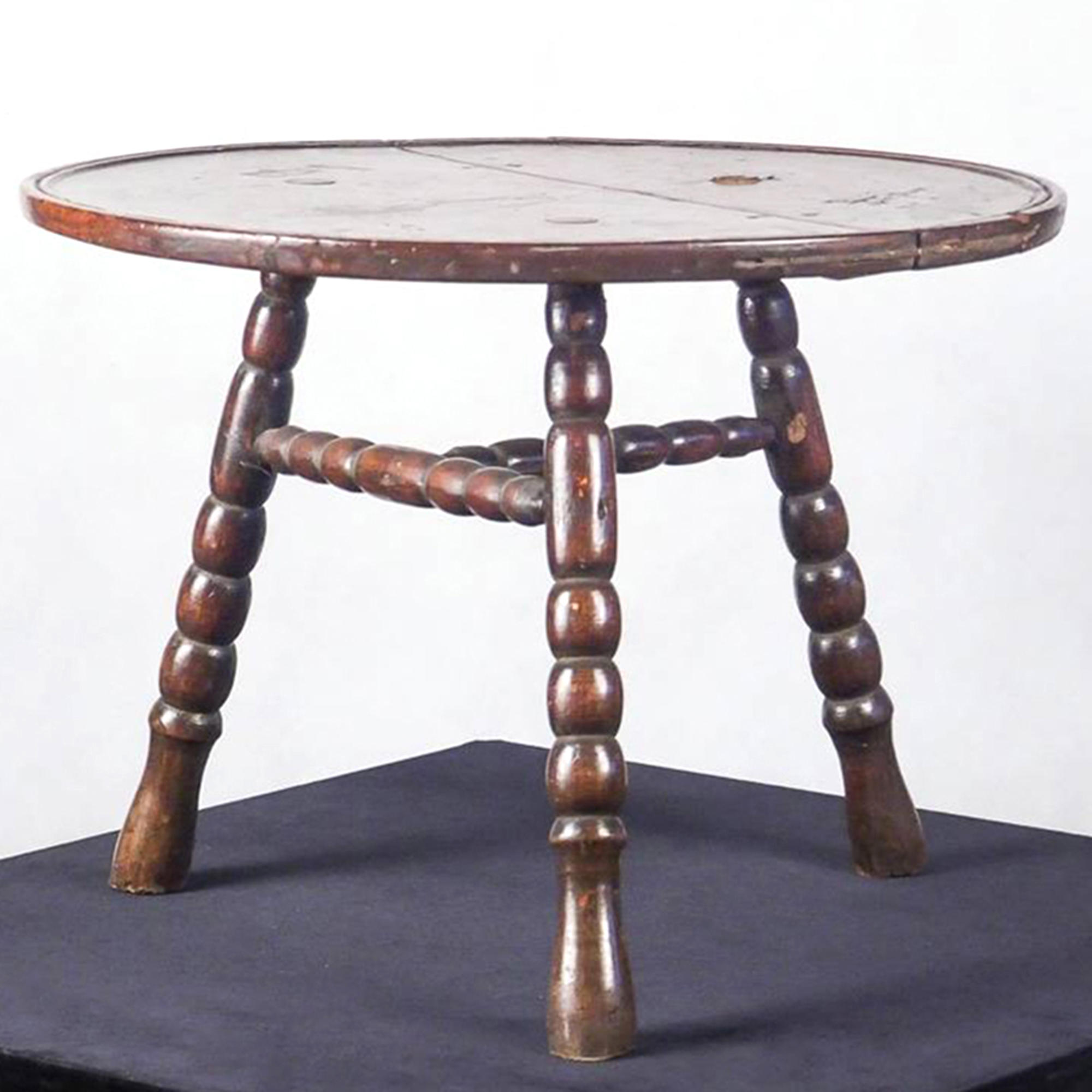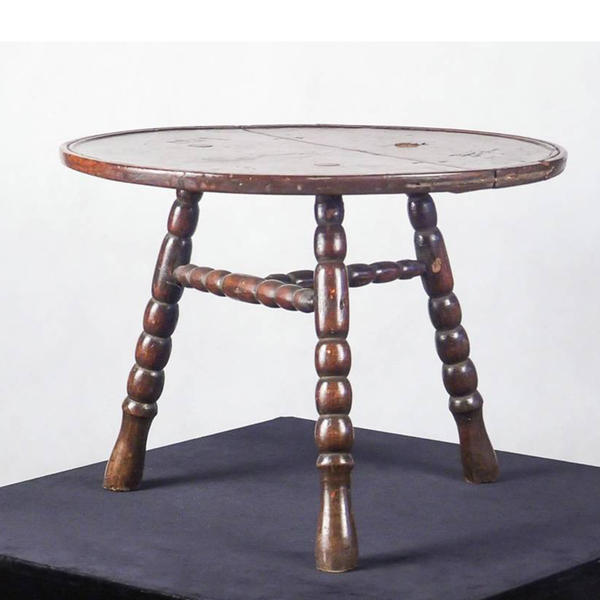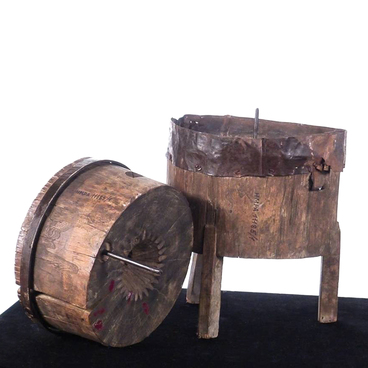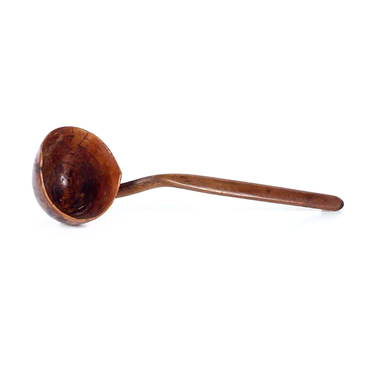The traditional Adyghe ‘aney [Iанэ] is a round, small-diameter serving table on three shaped legs with crossbars. Owing to a well thought-through design it was stable and did not overturn when accidentally stumbled on, was very convenient to sit at. There would commonly be three-legged little stools at each such table.
Three-legged table
Время создания
Early 20th century
Техника
Wood. Turning, polishing
8
Открыть в приложении#1
Стол на трех ножках
#4
#2
Historians believe that “aney table was one of the Adyghe people”s most ancient inventions. It is often mentioned in the Nart epos, the North Caucasus people”s epos that dates back to the 8th-7th centuries B.C.
#6
The round shape of the table top comes from the Adyghe pagan beliefs. Ancient Adyghes worshipped the sun – the great luminary – and tried to give the circular shape to most important objects. According to Circassian traditions and their world outlook, a table of such a shape meant that all those sitting around it were equal.
#7
Traditionally “aney were made from wood, often carved from the plane, one of the longest-living plants on earth. Explorers have discovered a few living planes whose age is 2000 years.
#10
The custom was not to cover “aney with a table cloth. Upon completion of a meal it was simply washed with hot water. It served as both a table and a tray. It was very light and therefore was convenient to move from one place to another, bring in and take away without disturbing the guests.
#12
French traveller Aubrey de la Mottraye wrote about a Iанэ meal:
“he table was totally uncovered, i.e. without a table cloth, but well washed and very clean. It served as a plate for all guests as everyone carved meat on it which they then took by the handful from the serving dish”.
#13
During the meal, the tables were brought in already laid and different dishes were served on different table in the established order. During the feast, over a dozen such tables could be brought in by the hosts - traditions of generosity and hospitality have for centuries been a hallmark of the Adyghe people, and guests have always been received with candid care and great attention.
#14
Giorgio Interiano, an Italian historian and ethnographer, the author of the first European accounts of the life and customs of the Circassian people, noted:
“Circassians highly value generosity and willingly give away everything they have, with the exception, though, of their horses and weapons”.
#15
According to the notes of another foreigner who visited the Adyghe land, Mayor of Amsterdam Nicolaes Witsen:
“both men and women of Circassia are cordial, kind-tempered and virtuous.”.
читать дальшескрыть
00:00
00:00
1x
Three-legged table
Время создания
Early 20th century
Техника
Wood. Turning, polishing
8
Открыть в приложении
Поделиться



